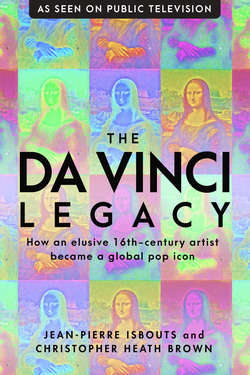Читать книгу The da Vinci Legacy - Jean-Pierre Isbouts - Страница 14
На сайте Литреса книга снята с продажи.
Leonardo’s First Milanese Studio
ОглавлениеLeonardo was never able to establish a full-fledged studio of his own in Florence, but that changed after he decided to move to Milan in 1482. As he began to receive his first commissions beginning around 1486, Leonardo was finally in a position to assemble his own bottega, which eventually grew to at least six apprentices (or “dependents,” as Leonardo described them). These included a painter named Tommaso Masini or Zoroastro; a German artist known simply as Giulio; and a clutch of other pupils, variously identified as Gianmaria, Galeazzo, Bartolomeo, Benedetto, and others.
This group was joined by a rather loutish ten-year-old boy named Giacomo Caprotti, later known as Salaì. Little Salaì became an artist of some talent, as well as Leonardo’s close friend and “companion.” That the young man was also a rascal and a thief is attested by Leonardo’s famous note, in which he wrote:
On September 7, he stole a silverpoint valued at 22 soldi, from Marco [d’Oggiono] who was living with me, and he took it from his studio, and when the said Marco had searched high and low for it, he found it hidden in Giacomo’s box.”11
But Leonardo’s workshop did not consist only of young pupils and assistants. Remarkably, it also included Lombard painters who were already accomplished artists in their own right and, in some cases, had completed commissions for the Duke of Milan. This category included Giovanni Ambrogio de Predis, with whom Leonardo had worked on the Virgin of the Rocks; the Milanese artists Giovanni Antonio Boltraffio and Andrea Solario; the painter Marco d’Oggiono, who hailed from the nearby town of Oggiono; and Bernardino de’ Conti, who was born in Pavia. This group, particularly Boltraffio, Solario, and d’Oggiono, became the core of Leonardo’s following—the Leonardeschi, as we call them—in the decades to come. Over the next few years, other assistants and collaborators moved in and out of the studio, including Bernardino Luini; Cesare da Sesto; an artist named Ferrando Spagnolo or Ferrando the Spaniard, commonly believed to be Fernando Yáñez de la Almedina; and a Spanish compatriot known as Fernando de los Llanos.
The essential difference between apprentices and collaborators was that Leonardo was paid for taking pupils under his wing, because he would also be responsible for their food and clothing, whereas fellow maestri would conceivably share in the proceeds of whatever work they sold together. In this, Leonardo showed his willingness to adopt the Milanese model, rather than the Florentine way of doing business. In Milan, the idea of several painters working together on a large painting or mural, without any single artist necessarily being recognized as the principal author, was accepted operating procedure. Throughout the quattrocento—the 15th century—and beyond, art circles in Milan adhered to that medieval model. In contrast, Florence fostered the idea of the artist as an individual virtuoso, to be known and credited by name. That, in essence, is how Leonardo won his first contract in Milan to begin with—by working collaboratively on a large panel of a Madonna, the Virgin of the Rocks, which had been commissioned from the de Predis brothers.
This first period in Milan, under the patronage of the Duke of Sforza, was the high point for Leonardo’s studio, even if the artist’s relationship with Ludovico Sforza was tempestuous, and the ducal patronage unpredictable. Most of the duke’s art budget went to projects at three major religious institutions: the large monastery of Certosa di Pavia, the Santa Maria delle Grazie, and the Milanese cathedral. Large funds were lavished on Lombard artists who were far less talented but certainly more reliable than Leonardo when it came to delivering on time and on budget. Nevertheless, these years represented what was perhaps the most stable period in Leonardo’s career. With his associates and pupils he worked on his great cavallo in clay for the Sforza equestrian monument, wildly praised by his contemporaries; a portrait of Ludovico’s official mistress, the fourteen-year-old Cecilia Gallerani, which became the revolutionary Lady with an Ermine; an equally astonishing portrait, now called La Belle Ferronnière, of another of the duke’s paramours, Lucrezia Crivelli; and designs for what became the transformative work of his Milanese career, the fresco of the Last Supper.
As Leonardo’s notebooks show, between 1490 and 1494 there were at least six assistants working with him, including maestri like d’Oggiono, Boltraffio, and de Predis. This naturally strained the studio’s overhead. When the duke fell seriously in arrears with his payments, Leonardo drafted an indignant letter, complaining that “if your lordship thought I had money, your Lordship was deceived, because I had to feed six men for thirty-six months, and I have had only fifty ducats.”12
